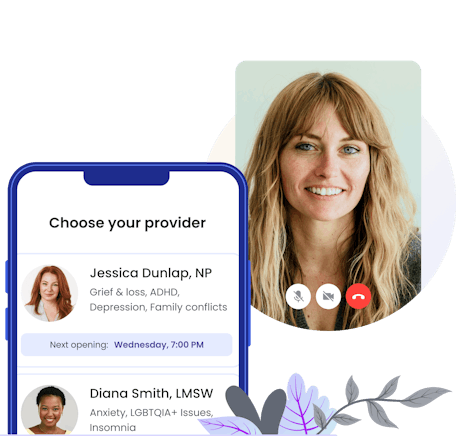6 Self-Care Tips for Stress and Burnout Recovery
When stress weighs heavily on your shoulders or burnout leaves you feeling emotionally and physically drained, self-care becomes crucial. But if the idea of setting aside time for activities like making a skincare routine or fitting in a workout feels like an uphill battle, you’re in the right place. While these moments of relaxation may be valuable, true self-care can simply start with a shift in mindset. In this article, we’ll explore stress and burnout and provide six actionable tips to help you change your perspective and begin prioritizing self-care. {MiniWidget:Anxiety} Why it’s important to relieve stress Stress is a natural reaction to pressure, but when left unchecked, it can take a toll on your mental and physical health. Chronic stress is associated with anxiety, depression, muscle tension, and even cardiovascular disease. By learning to manage stress effectively, you can improve your overall quality of life and foster resilience in the face of challenges. What is burnout? Burnout is a state of emotional, mental, and physical exhaustion caused by prolonged and excessive stress. It often occurs when you feel overwhelmed, emotionally drained, and unable to meet constant demands. Over time, burnout can diminish your sense of accomplishment and leave you feeling detached or unfulfilled. Common symptoms include fatigue, lack of motivation, and changes in sleep patterns. While often associated with work-related stress, burnout can also stem from other areas of life, such as parenting or personal relationships, making it crucial to recognize and address early signs. Six tips for meaningful self-care Self-care begins with a shift in mindset – a deliberate effort to support your wellbeing and realign your priorities. Below are six lesser-discussed yet impactful self-care tips to help you rediscover balance. 1. Shift the narrative on value Sometimes we unknowingly create internal narratives that influence how we handle stress and perceive ourselves. Are you telling yourself that you’re only valuable when you're productive or that asking for help makes you weak? This narrative can perpetuate burnout. Challenge them by identifying these thoughts and replacing them with compassionate, truthful affirmations. For example, instead of “I should be able to handle everything,” you can tell yourself, “It’s okay to need support. It doesn’t make me less capable.” 2. Set boundaries without guilt Burnout often stems from an excess of demands, whether from work, family, or society at large. Meaningful self-care involves learning to say “no” with confidence. Practice by identifying your limits and communicating them with clarity and kindness. If you find yourself feeling guilty after saying no, remember that setting boundaries isn’t selfish. It’s essential for preserving your mental and emotional health. Think about it this way – when you say yes to everything, you deplete your energy and lose time for what truly matters to you. 3. Relish the quiet moments We live in a world that tends to glorify busyness, but constant motion can leave you feeling overwhelmed. Instead of filling every free moment with scrolling on your phone or aiming to be productive, intentionally create moments of stillness. This might mean sitting quietly with your thoughts, savoring a warm cup of tea, or watching the sunset without distractions. Stillness can give you the mental clarity to reset and reconnect with your values. 4. Learn to celebrate small wins Burnout often makes us focus exclusively on what’s left undone, which might leave us feeling inadequate. A meaningful act of self-care is to celebrate your small victories – whether it’s completing a single task, cooking yourself a nourishing meal, or even getting out of bed on a particularly hard day. Acknowledging progress, no matter how small, reinforces a sense of achievement and shifts your focus to the positive. 5. Reconnect with your inner values Burnout can sometimes stem from neglecting what truly matters to you, and instead, prioritizing the needs of others. Devote time to reflecting on what is most important to you. What brings you joy? Then, take actionable steps to weave those values back into your everyday life. For instance, if creativity energizes you, set aside time, even just 10-20 minutes a day, for painting or writing. Aligning your actions with your core values can bring fulfillment and counter feelings of emptiness. 6. Practice intentional gratitude Gratitude can help ground you and remind you of the good things in your life, even during difficult times. It doesn't mean ignoring life's challenges. If you're not into list-making, try focusing on one thing each day that you're truly grateful for. It could be a comforting hug, a kind word from a stranger or loved one, or the sound of rain. Savoring these moments can help reframe your perspective. Seeking out professional support While self-care is an essential part of managing stress and preventing burnout, the support of a skilled mental health professional could make all the difference. Cerebral offers compassionate clinicians ready to listen and create personalized treatment plans to help you address challenges like burnout, chronic stress, anxiety, and depression. Remember, prioritizing your mental health isn’t something you have to do alone. We’re here to empower you with the tools and care you need to feel your best. Join Cerebral today! *Based on Cerebral clients with moderate to severe anxiety and/or depression from 2020-2023. Image by RF._.studio _ on Pexels.
Read more














